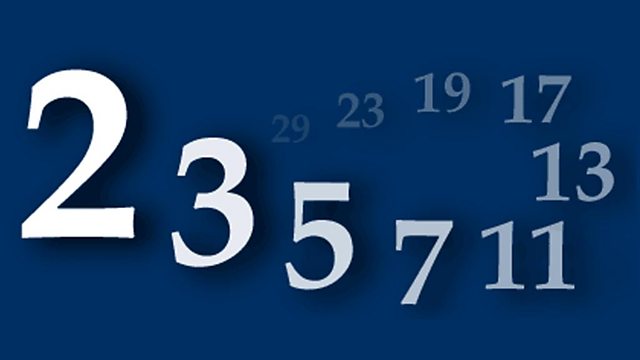The Largest Prime
It is hoped that large prime numbers can be used to form the basis of more secure encryption codes that will stymie internet hackers and credit card fraudsters.
Think of a number. Any number. Chances are you haven't plumped for 2 ^ 13,466,917 -1. To get this, you would need to keep multiplying 2 by itself 13,466,917 times, and then subtract 1 from the result. When written down it's 4,053,900 digits long and fills 2 telephone directories. So, as you can imagine, it's not the kind of number you're likely to stumble over often. Unless you're Bill Gates checking your bank statement at the end of the month.
So why is this rather cumbersome number so important? Discovered by 20 year-old Canadian, Michael Cameron in 2001, its significance stems mainly from the fact that it is prime. And at present, it stands as the 'Titanic', or largest prime number known to mathematicians.
Primes, as drummed into us at school, are any number whose only divisors are 1 and itself. Therefore, 2,3,5,7 are primes but 10 isn't, as it can also be divided by 2 and 5. Primes occupy a special place in mathematics because they are considered to be the building blocks of arithmetic. 15, for example, can be deconstructed to its prime foundations of 3x5. All numbers can be similarly expressed as a series of primes multiplied together.
Cameron's 'Titanic' discovery has the further distinction of belonging to the subset of prime numbers known as Mersenne. A Mersenne prime takes the form 2p-1, where p is the number of times the original figure must be multiplied by itself. From the result you must then subtract 1. Therefore 7 equals 23-1, and as such, forms one of the only 39 Mersenne primes known to date.
At the time of the discovery, Cameron was taking part in the Great Internet Mersenne Prime Search (GIMPS). A global project, GIMPS utilises distributed computing power, where subscribers make available the idle time on their PCs for some serious prime number crunching. Formed in 1996 by George Woltman, GIMPS is geared exclusively towards the discovery of these super primes and has had an enviable track record, unearthing the last 5 out of the 39 known Mersennes.
This quest for bigger and better primes isn't just frivolously obsessive. It is hoped that these numbers can be used to form the basis of more secure encryption codes that will stymie the Internet hackers and credit card fraudsters.
To many, the challenge is intellectual but there can be financial incentives. A $100,000 award awaits the discoverer of the first ten million digit prime, and with each new Mersenne being approximately twice the size of the previous one, some lucky GIMP can't be far off the jackpot.
Last on
More episodes
Broadcast
- Wed 29 Oct 2003 15:45主播大秀 Radio 4

